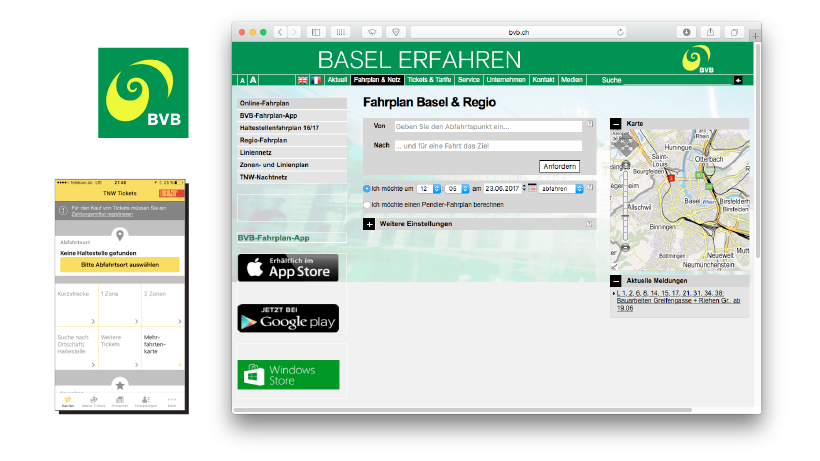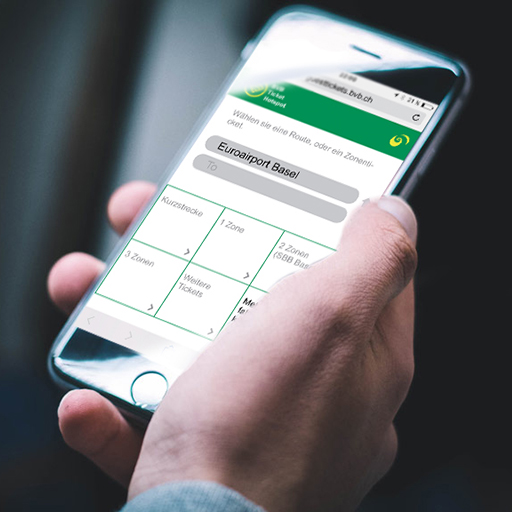»cashless airport communte«
minimal invasive
payment concept
As a designer
... focussing on user experience, many situations trigger ideas for "easy solutions". These quick ideas oftentimes keep their veracity in the realm of possibility, but can not be validated without further consideration of implementation. Most of times further concept stages are not sought out for various reasons.
This concept was created in a limited timespan of 5 days, to sketch out use cases, technical implementation and visual communication to create a perceptible foundation for value and benefit assessment.
project background
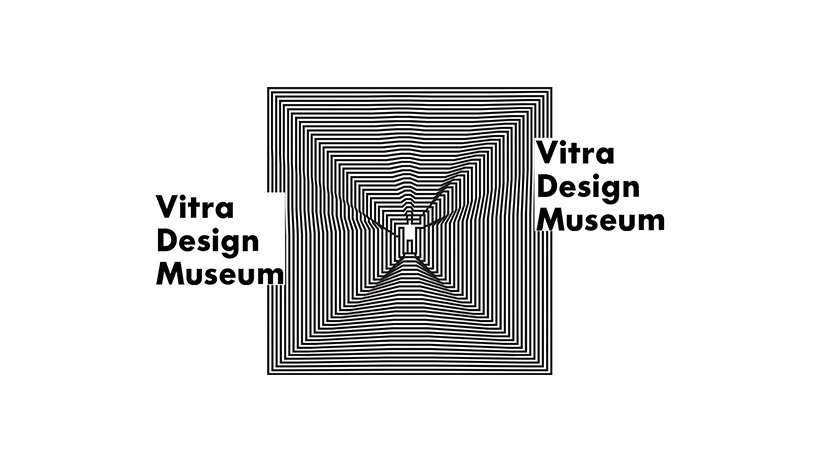
(source: https://www.design-museum.de/de/ausstellungen/detailseiten-wanderausstellungen/hello-robot.html)
Initial starting point of the project was a exhibition visit at "Vitra Design Museum" in Weil am Rhein.
The trip was planned with a overnight stay, visiting the museum on arrival day and returning the following afternoon. (fig. 1)
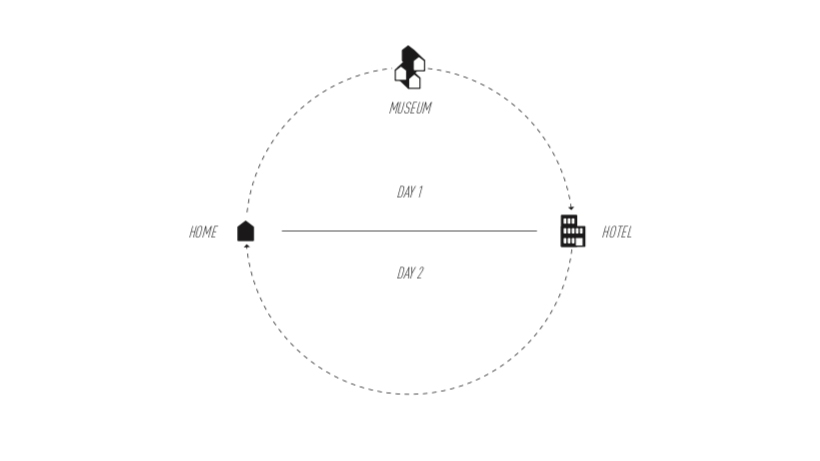
(fig. 1)
During planning different travel options were compared, finally deciding on flying as the fastest and overall most convenient method. The hotel was booked in Basel for easy access to evening activities and commute from and to the airport.
Fig. 2 lays out the sequecce of transportation methods, trasit points and destinations throughout the journey.

(fig. 2)
Particularities of Euroairport Basel-Mulhouse-Freiburg
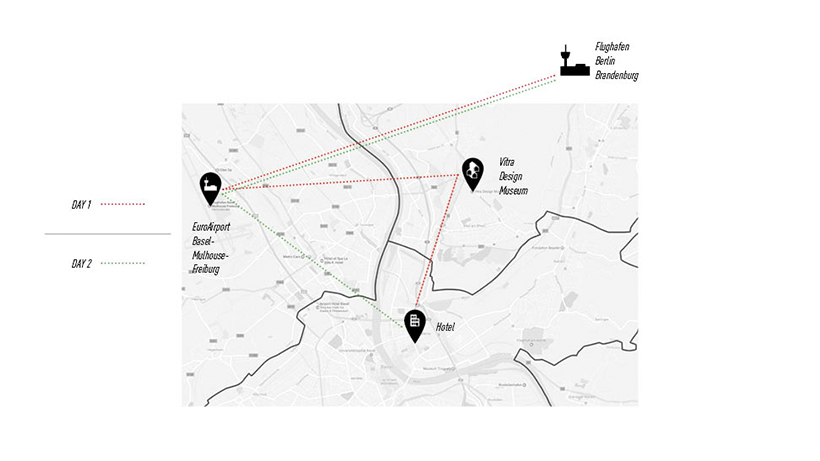
(fig. 3)
Having set the background, the journey needs to take some specialities into consideration contextualizing it geographically.
Starting in Berlin, Germany, the first major transition point
was "Euroairport Basel-Mulhouse-Freiburg (BSL/MLH/EAP)", which is technically located on French soil, but is subjected to a special customs rule allowing passengers to bypass France entirely.
The practical consequences are two exits, one for France and one for Swiss each.
Having arrived at the airport, fastest trasit to "Vitra Design Museum" leads over Basel to Weil am Rhein, crossing the border back to Germany, followed by another boder crossing back to Basel to the hotel.
Travelling within the boudaries of the European Union has eased with the introduction of the Euro, as it discontinued certain pre-travel preparations such as currency exchange.
Swiss, not being a part of the Economic and Monetary Union, holds a special position, keeping the above mentioned preparations still in place.
user expectaions

(fig. 4)
Stations within the journey can be defined into departure points, arrival points, destinations and transition points. All above (fig. 4) are arrival- and departure points along the journey with the airport standing out serving no other purpose than transitioning towards a destination.
Generally airports are invested into increasing the quality of stay giving different possibilities to kill excess time to satisfy the customer. In opposition departing the airport at arrival demands a smooth procedure to meet user expectations.
Observed User experience
Having pointed out he special position of Swiss currency wise and following the premise of user expectation, certain problems could be observed changing over to public transportation.
The majority of travellers originated from EU countries, trying to pay in Euros at the ticket machines with no local currency (Swiss francs) at hand. Failed cash transactions could be compensated with a debitcard, limited to Maestro and PostFinance Card (Swiss based) with no creditcard accepted.
Further – not communicated publically – tickets could be acquired via App, but with no hotspot near the machines. (fig. 5)
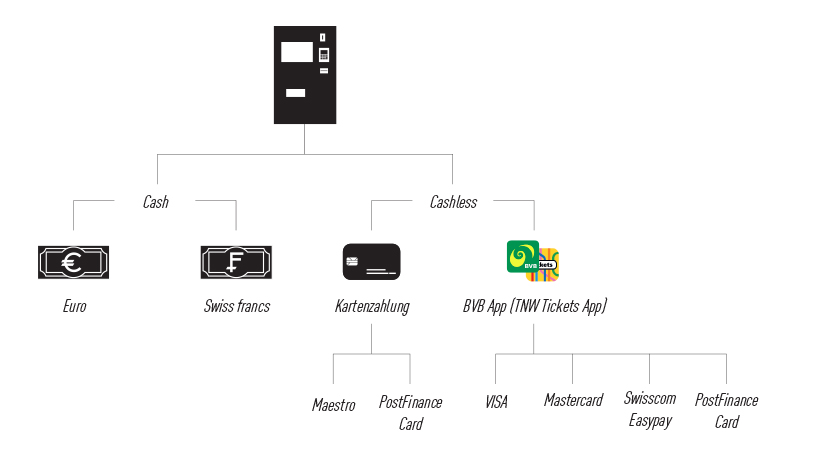
(fig. 5)
Inclusion of Euro as a payment method is a necessary and shows the circumstantial awareness of the public transportation company.
The real problem comes with the ticketprice, which is an uneven value resulting in a high amount of change returned to the customer. This fact leaves the change reservoir empty regarding considering daily traffic and maintenance intervals. Succesful purchases can only be issued in the exact amount of the ticketprice – otherwise the process is cancelled at the final stage leading to confusion and frustration.
Debitcard payments are only possible with one international standart (Maestro) dismissing other possibilities. (fig. 6)
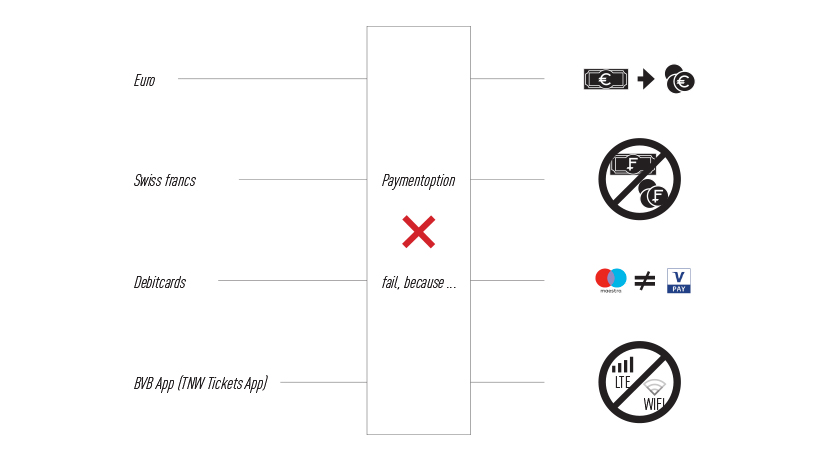
(fig. 6)
Concept
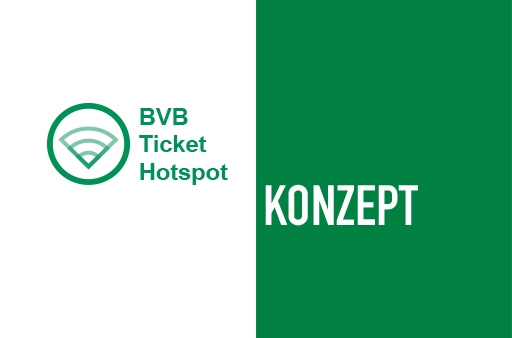
Building on the observations, most travellers are relying on acquiring a physical ticket at the local machines – they are the main touch point. Given this circumstance a hardware upgrade is the most promising and minimal invasive approach to improve the user experience. Goal is to relieve the machines by giving an digital payment alternative and illustrate implementation.

(fig. 7)

(fig. 8)
Tickets are bought by accessing the Ticket Hotspot transferring the user to a booking page with divers cashless payment options. A PDF-Ticket is generated, which can be downloaded at the end of the process without exiting the session.
The branding, design and flow are based on the websites color scheme and "TNW Tickets" App, which is used by BVB as well. Recources are minimized and familiarity is preserved.
